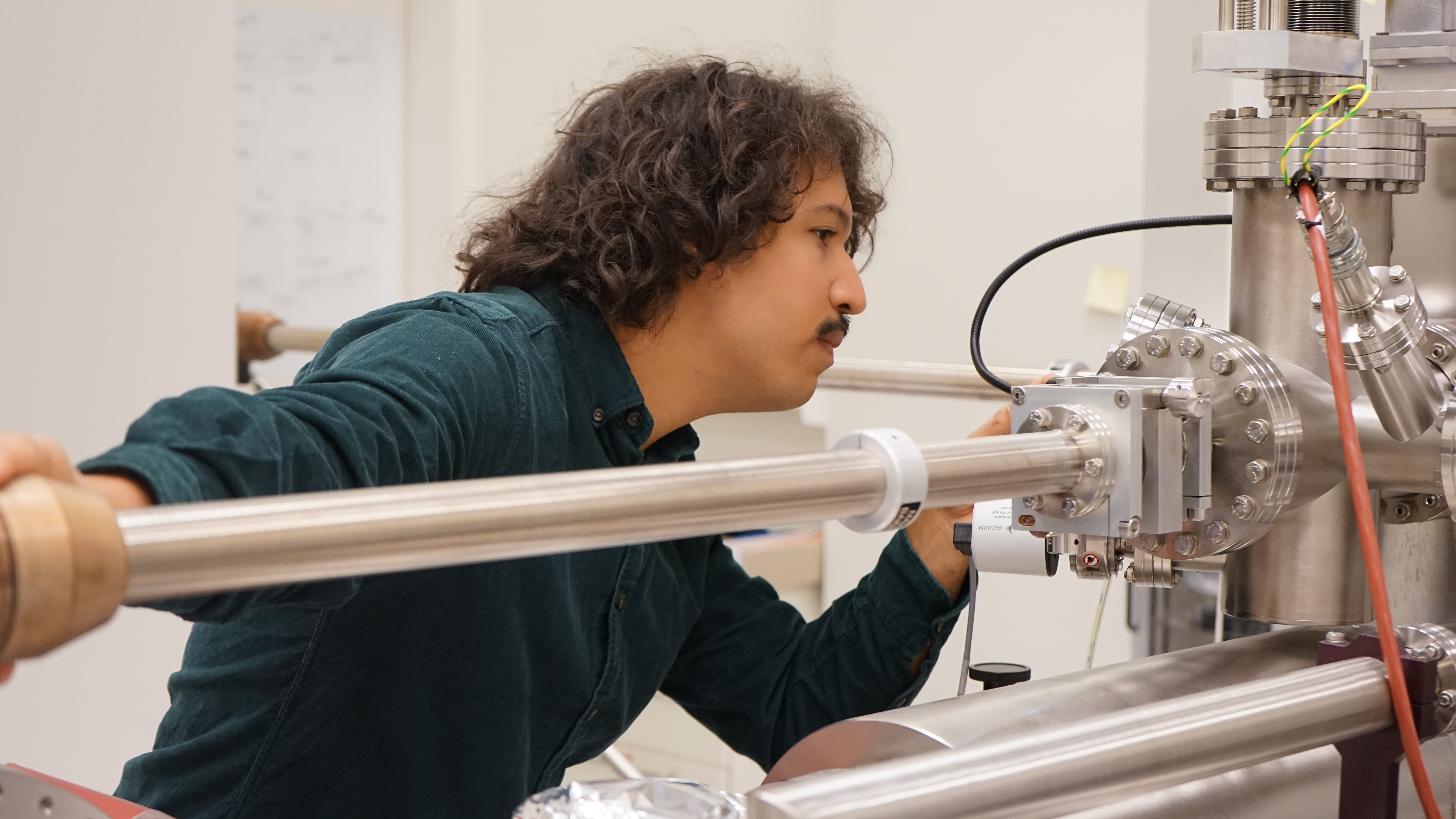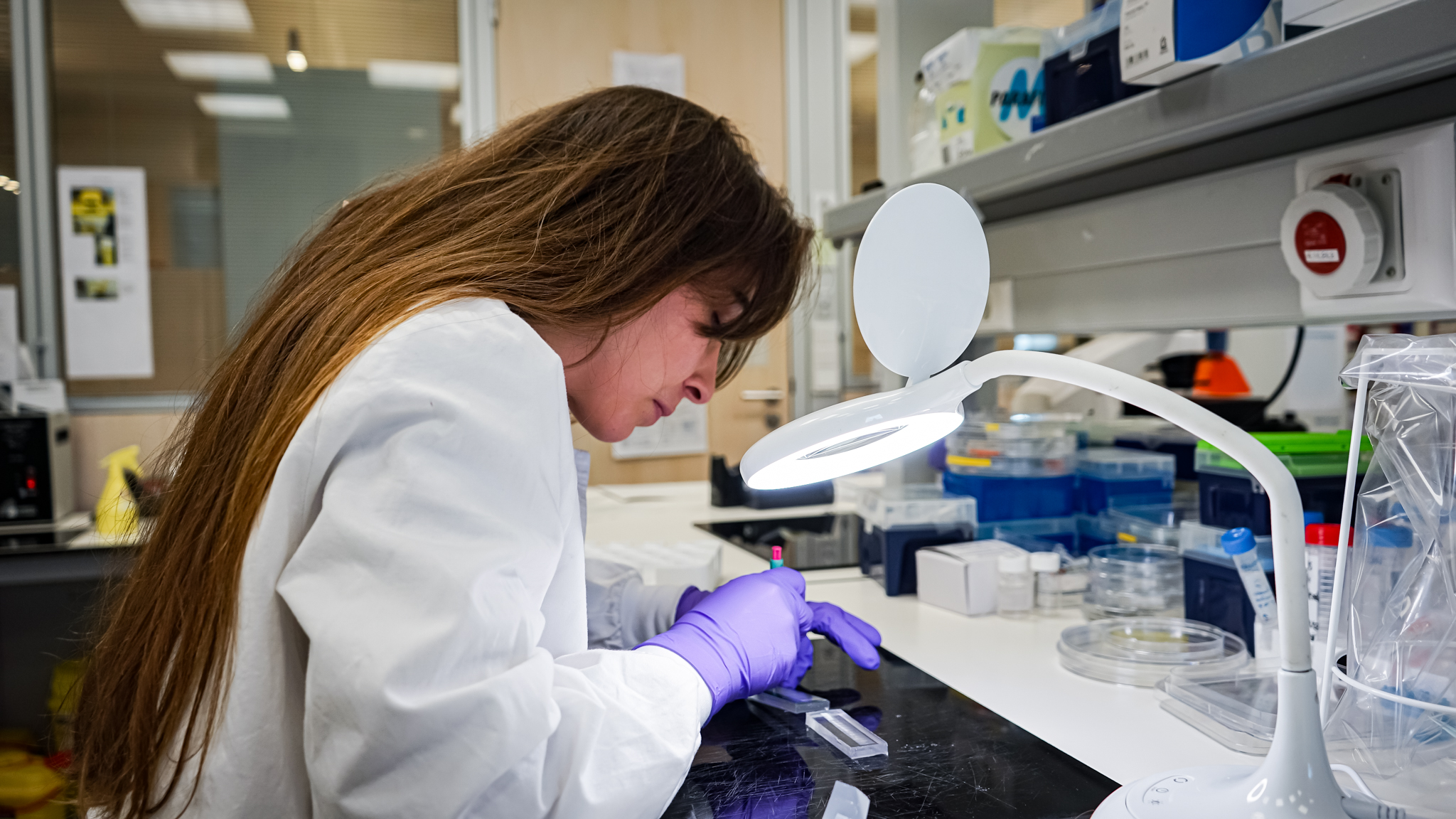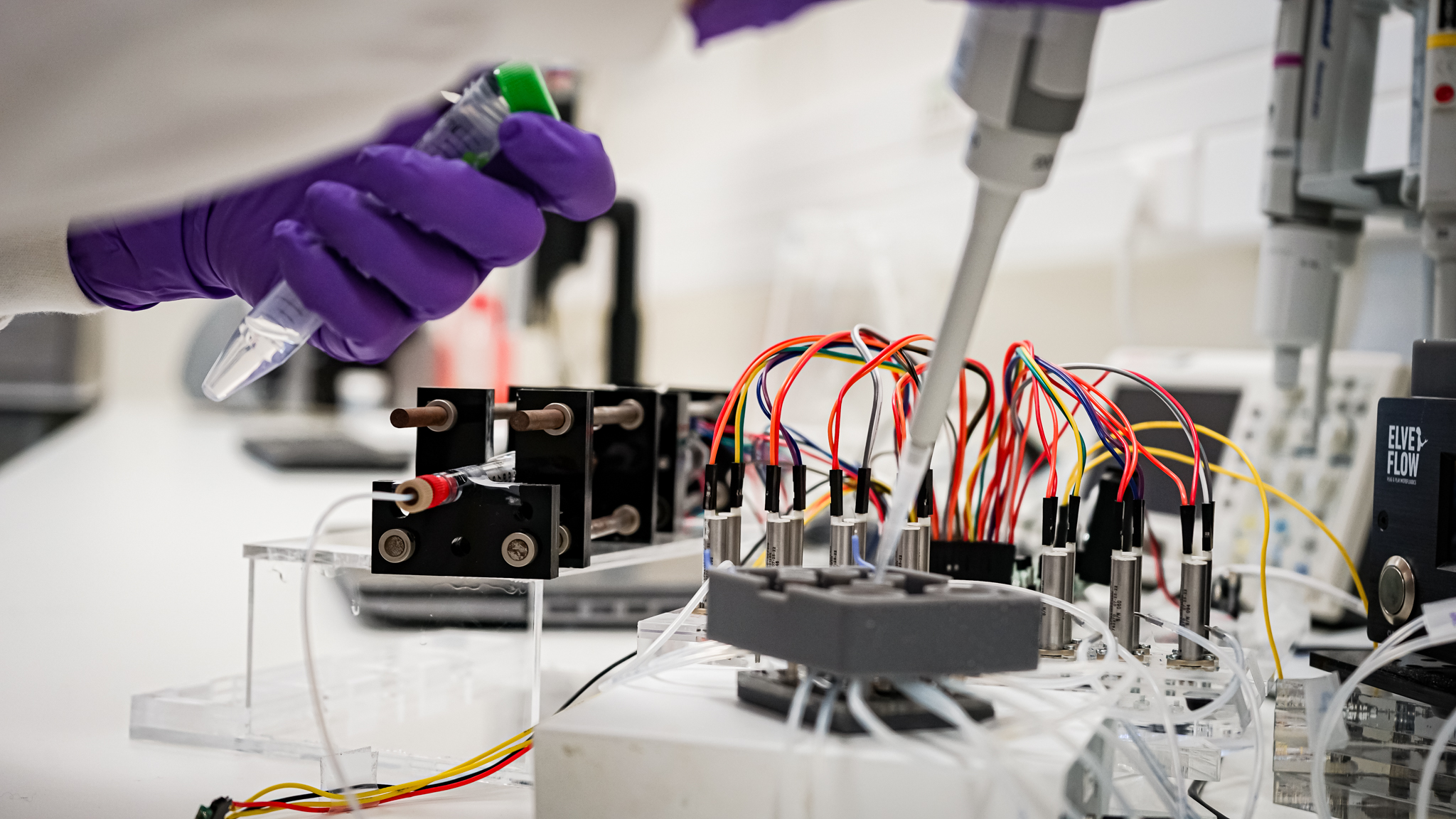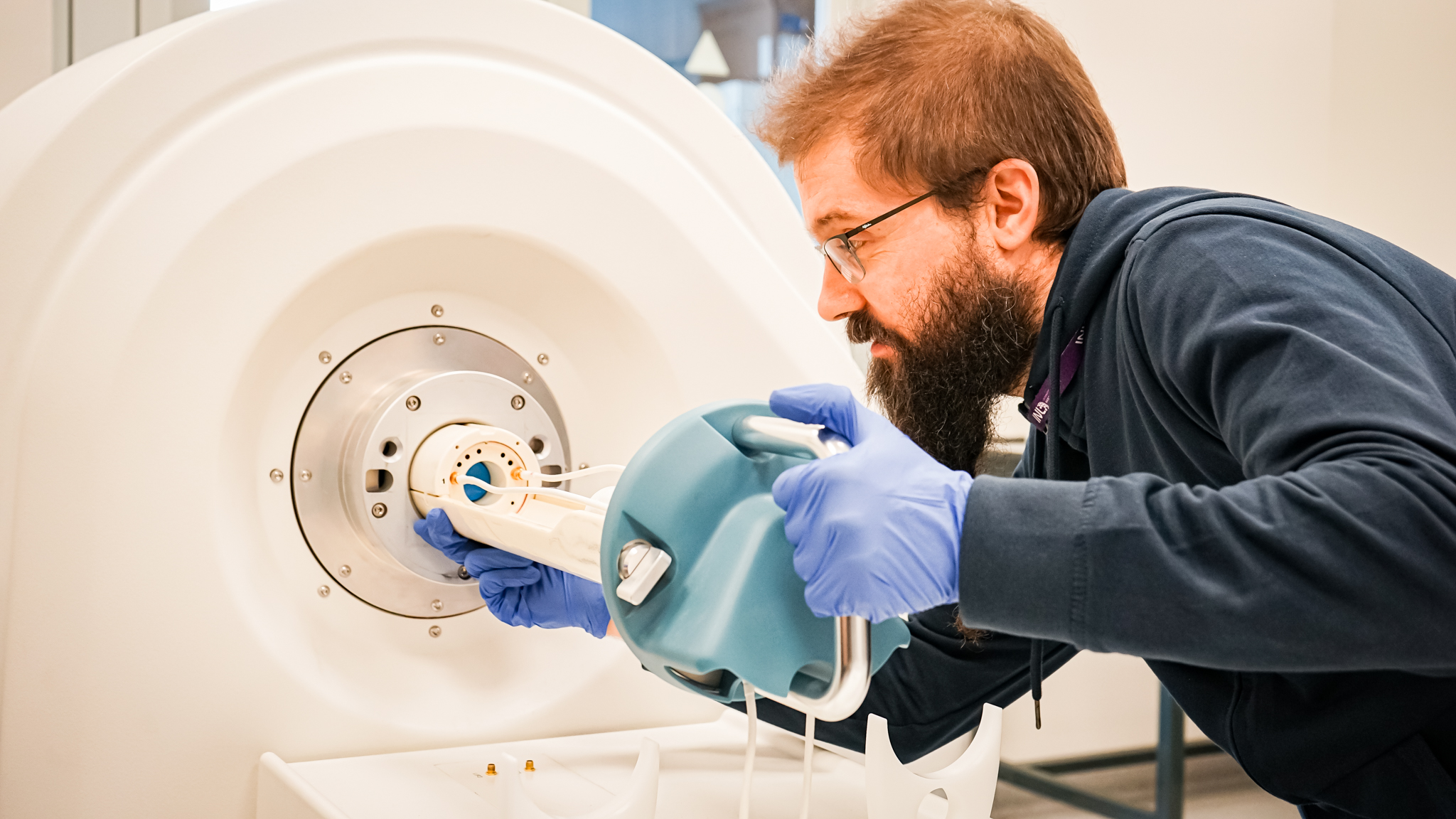
Is there a nano-sized ‘magic bullet’ for treating cancer?
February 29, 2024
The Royal Society of Chemistry (RSC) selected a research study from INL as one of the groundbreaking cancer research papers of 2023. This collection of papers aims to highlight recent developments in efforts to understand cancer and ways to provide effective treatments.
In this study published in the journal Nanoscale, the Nanomedicine research group at INL, in collaboration with Stasiuk’s group at King’s College London, developed a new theranostic method for cancer treatment. Theranostics combines therapy and monitoring in a single formulation, offering a more personalised approach to treat cancer. INL researchers developed redox-responsive nanoparticles comprising manganese dioxide and a platinum prodrug, both intended to be activated specifically at the tumour microenvironment.
Smart theranostic strategies, also known as responsive theranostics, are approaches in which the drug and/or imaging components are only activated or released in response to a certain stimulus. This stimulus can be a multitude of switches: light, magnetic fields, temperature, ultrasounds, or biological conditions such as the pH or redox state.
For example, imagine a scenario where smart theranostic nanoparticles, which are temperature sensitive, are injected into the body, and they travel to a tumour site. When an external trigger, such as an alternating magnetic field or a laser, is applied to the tumour, it locally raises the temperature of the tumour tissue. The nanoparticles, designed to respond to this increase in temperature, will release their theranostic agents specifically within the heated tumour area. This localised release ensures that the treatment is targeted directly at the tumour site, minimising side effects on healthy tissues while also easing the monitoring of the evolution of the disease enabling MR imaging. This is also an approach followed by the Nanomedicine group.
But in this study, INL researchers explored a different aspect: the redox environment. Cancer cells have been found to exhibit a state of redox imbalance, characterised by an alteration in the homeostasis between oxidants and antioxidants, leading to an increase in oxidants within the cell. Among other biomolecules, glutathione, a powerful antioxidant that plays a major role in regulating the redox status of cells, is overexpressed in cancer tissues. In fact there is 4 times higher concentration of glutathione in a tumour microenvironment compared to healthy cells and organs, thus making it a promising target for smart theranostics.
To develop redox responsive nanoparticles, “we used manganese dioxide, in which Mn presents a 4+ oxidation state, and can function as a responsive contrast agent for magnetic resonance imaging (MRI)”, explains Juan Gallo, the lead author of this study. Manganese dioxide nanoparticles show weak paramagnetism, resulting in a negligible effect on diagnostic MRI images. However, in the presence of glutathione or other redox-active species, manganese dioxide nanoparticles are degraded, i.e. the manganese is reduced to free aqueous manganese in the 2+ oxidation state.
“Manganese in its 2+ oxidation state is strongly paramagnetic, greatly enhancing its effect on the MRI signal, translating into clearer, brighter images”, adds J.Gallo. “Manganese dioxide nanoparticles, therefore, exhibit redox-responsive off/ON magnetic resonance behaviour, which can be explored for tumour detection and follow-up”.
In this study, researchers developed a ‘magic bullet’ combining a safer version of cisplatin, a commonly used clinical chemotherapeutic drug, with manganese dioxide nanoparticles. These manganese nanostructures serve as responsive contrast agents and, simultaneously, as responsive delivery platforms for the pro-drug.
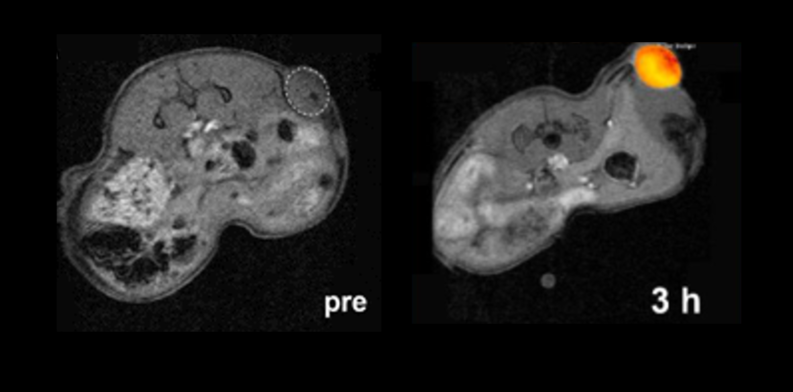
The final formulation was tested in vitro using 2D and 3D models of lung cancer, followed by evaluation in vivo using a mouse model of the disease. The results revealed a robust therapeutic activity comparable to that of the active drug, together with promising performance as MRI contrast agents.
Manuel Bañobre, Nanomedicine research group leader, comments “While systemic imaging and therapeutic studies still need to be conducted, these results indicate that manganese-platinum nanostructures hold great potential as redox-responsive dual-switch MR theranostics for cancer therapy.”
Juan Gallo concludes “This theranostic appproach holds promise for the treatment of various types of tumours currently treated with Pt drugs, particularly for those cisplatin-resistant, such as lung and ovarian carcinomas, by overcoming resistance mechanisms typically dependent on gluthatione”.
The study was performed in the framework of an ongoing collaboration between the Nanomedicine group at INL, the University of Hull and King’s College London. A shared PhD student (now Dr Brito) between the 3 institutions was the main driver of the research.
Text & Photography by Catarina Moura, Science Communication Officer
